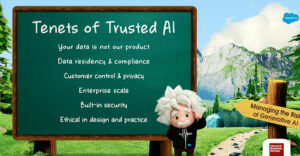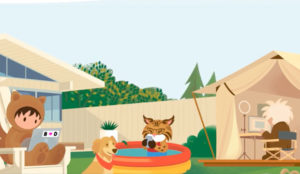
We get so wound up talking about the value of online communities for social CRM purposes — for instance, in building loyalty, identifying potential leads, and improving the quality of service our businesses deliver — that sometimes we forget that they’re really scaled-up versions of actual communities.
The metaphor is almost perfectly realized from real-world to online, but we still often fail to make some obvious connections between the two. That leads to awkwardness, inappropriate behavior and other faux pas — which are often dismissed when individuals commit them, but which can have a bottom-line impact if a business or the representative of a business is the perpetrator.
The similarities were driven home to me last week, when I served as a leader for a youth group “work camp,” supervising 11 high schoolers as they worked on projects in the farming communities around Pescadero, California. The value of community is a real and tangible thing in a place like this, where resources are limited but need is still great.
Some things leaped out at me from this experience that are directly translatable to online communities.
1. Communities Need Participants
Just declaring that you have a community is not enough. One of Pescadero’s issues is that a significant number of houses and farms were bought up as second homes during the dot-com bubble of the late 1990s — meaning that they sit empty much of the year.
These homeowners are “on the books,” but they aren’t really around much — and when they are, by and large, they’re really not there to get their hands dirty dealing with the social, economic and infrastructure issues that make life tough for their neighbors.
The online equivalent of this is a community with lots of people signed up, but few participants in discussions. You need some “super users” to generate energy, trigger conversation and create the value needed to keep your community growing.
If no one is filling that role, then provide someone from your business — that’s a great way to deliver the message that you’re interested in the other users as peers and as potential customers, and it could get the lurkers to begin participating with more enthusiasm.
2. Organize Your Community
Dragging a dozen youth into the country is good for getting to see how others live. Giving them things to do to help those people is a lot better. We tackled a bunch of projects that had just been waiting for manpower — including the first stage of building a community farm. The plans had been in place and the materials had been donated, but without bodies to do the work, those assets just sat around.
If you’re participating in a community or a social media channel, are you doing anything to lay the groundwork for participation? It could be as simple as merely asking questions or as involved as describing a business problem and then collaborating on a solution with other members of the community.
The point is this: People like to work with other people they like — but they often need to have a project outlined for them before they can join together to find those like-minded people and work toward a solution. If you act as a catalyst, and what you catalyze is worthwhile, rewarding discussions and new partnerships will follow.
3. Get Excited About Other Community Members
Several of the activities we did involved working with teens from an organization in Pescadero. None of us knew each other before we took a first-aid course together; later, we worked as a team on a food bank distribution effort and then collaborated on a barbeque for local farmworkers.
While the city kids and the country kids had little in common at first, they were interested in each other — and that resulted in authentic friendships being formed.
Are you coming across as authentic in your dealings in social media? It’s painfully obvious when someone is posting, tweeting or blogging because it’s a job requirement. It’s also obvious when someone’s communicating true interest in the other participants in the community. The quality of the exchange is significantly more lively, and connections formed between participants are far stronger.
If your goal is to foster a peer-to-peer relationship between your organization and its customers and potential customers, and to build loyalty and boost the esteem in which the community holds your business, then the person you select to do the communicating is incredibly important. If that person’s not truly interested in other community members, find someone who is.






















































